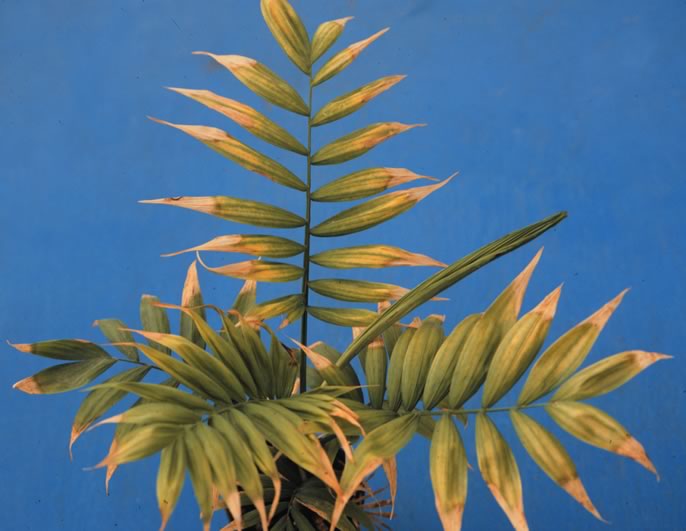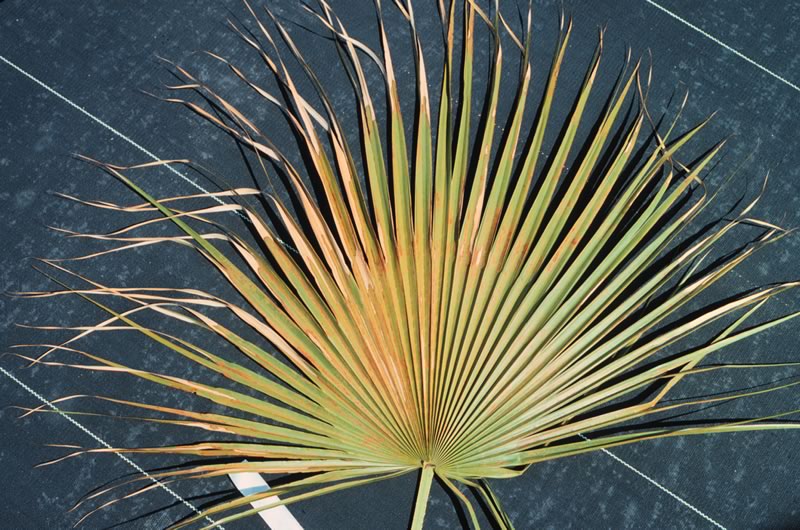Micronutrient or Chemical Toxicity
|
Figure 1. Boron toxicity on Chamaedorea leaves. Photo by T.K. Broschat.
|
|
Figure 2. Copper toxicity on Acoelorrhaphe wrightii leaves. Photo by T.K. Broschat.
|
|
Figure 3. Close-up of copper toxicity on Acoelorrhaphe wrightii leaves. Photo by T.K. Broschat.
|
Symptoms/signs
When toxic chemicals, including toxic concentrations of essential elements such as boron, are taken up by the root system, all but the youngest leaves typically show leafletleaflet:
divisions of pinnate leaves
tip necrosisnecrosis:
dead tissue, usually desiccated and brown to gray in color
(Figure 1). The base of these leaves usually remains green. If toxic chemicals are applied to the foliage as a spray, necroticnecrotic:
see necrosis
spotting on the leaves, as well as extensive leafletleaflet:
divisions of pinnate leaves
tip necrosisnecrosis:
dead tissue, usually desiccated and brown to gray in color
, are typical symptoms (Figures 2 and 3).
May be confused with
Soil soluble salts injury also results in leafletleaflet:
divisions of pinnate leaves
tip necrosisnecrosis:
dead tissue, usually desiccated and brown to gray in color
on most mature leaves. Potassium deficiency can also cause necroticnecrotic:
see necrosis
spotting or leafletleaflet:
divisions of pinnate leaves
tip necrosisnecrosis:
dead tissue, usually desiccated and brown to gray in color
, but this is restricted to the oldest leaves.
Cause
Boron toxicity can occur if irrigation water contains more than about 5 ppm boron or if excessive amounts are applied during fertilization. Foliar sprays with contact herbicides such as diquat or paraquat, or fertilizers such as copper sulfate, typically cause extensive leaf necrosisnecrosis:
dead tissue, usually desiccated and brown to gray in color
corresponding to the tissue in contact with the spray. Other toxic chemicals applied to the soil and absorbed by the root system could cause extensive leafletleaflet:
divisions of pinnate leaves
tip necrosisnecrosis:
dead tissue, usually desiccated and brown to gray in color
.
Occurrence
Boron toxicity is fairly common in some areas of the western US where irrigation water contains toxic levels of boron. Other chemical toxicities typically occur as a result of accidental or inappropriate application of a toxic chemical to palm foliage or soil near the palm.





